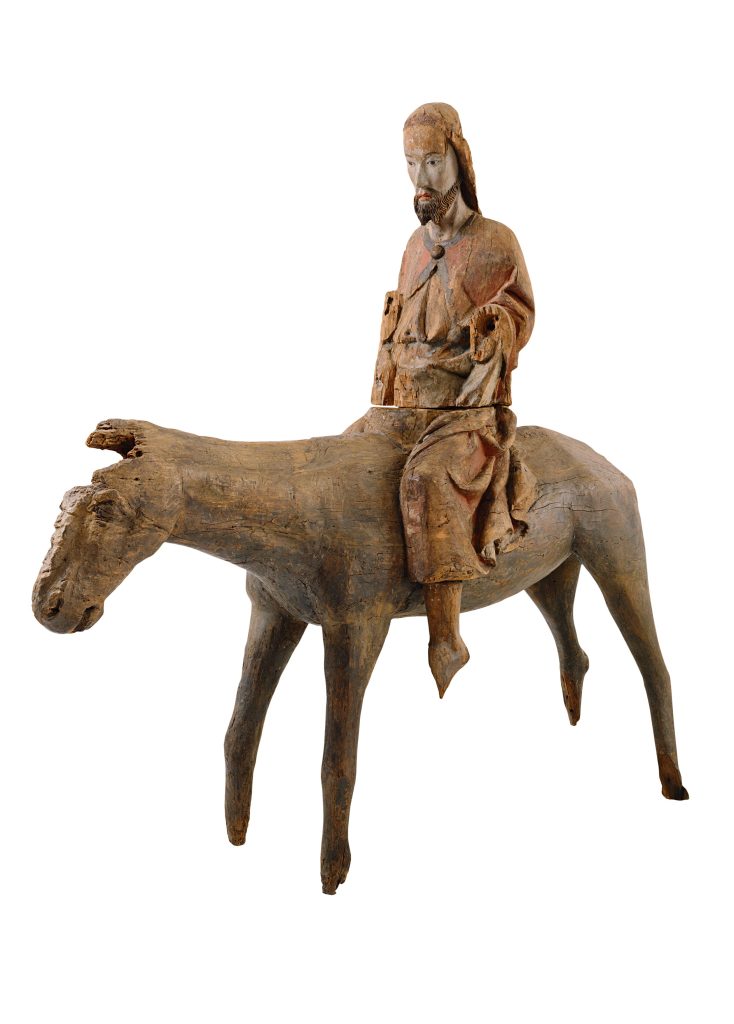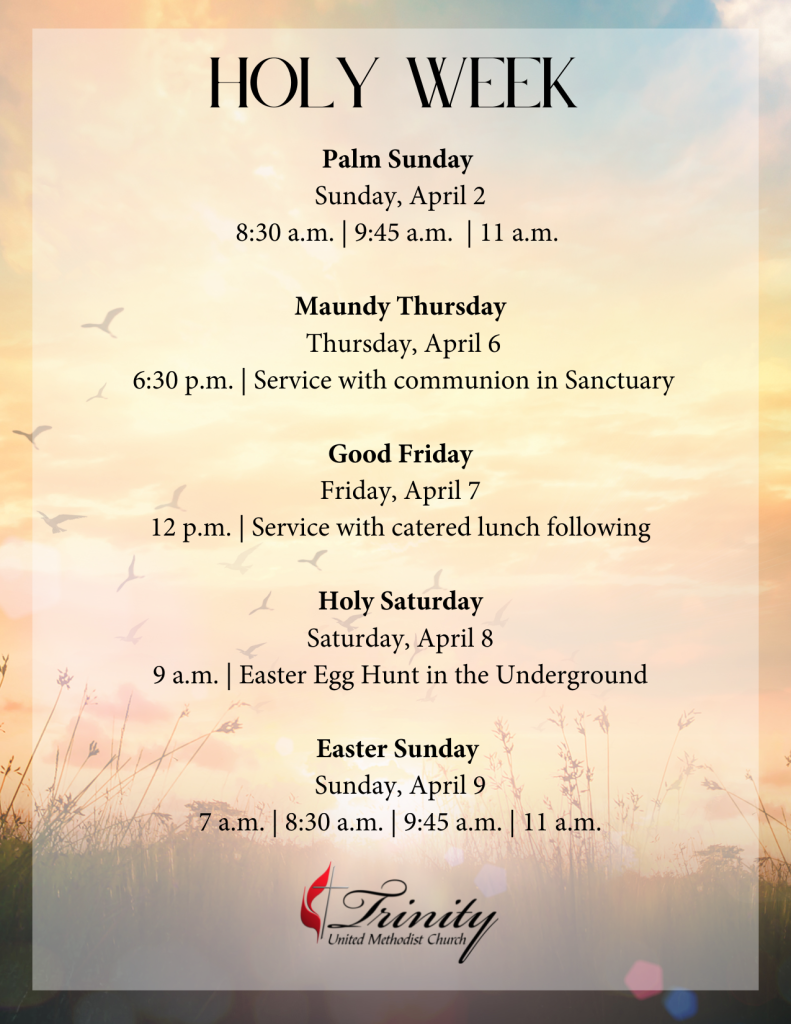by Rev. Dr. Matthew M. Williams, Senior Pastor
Palm Sunday begins Holy Week. The Procession of the Palms introduces our services on this day, which starts our Holy Week journey.
Father Henri Nouwen (1932-1996) discovered a sculpture of Jesus on a donkey in the Augustine Museum in Freiburg. He called it one of the most moving Christ figures he knew. The fourteenth-century sculpture originally came from a small town close to Breisach, Germany, on the Rhine. It was made to be pulled on a cart for the Palm Sunday procession.

Photo: Hans-Peter Vieser, CC BY 4.0
https://onlinesammlung.freiburg.de/en/object/327D88D248B9778BC8A5F9A46B3EA07D
Nouwen found himself drawn to this sculpture. He sent postcards of it to his friends and kept one in his prayer book. Looking at the face of Jesus, he reflected:
“There is melancholy, but also peaceful acceptance. There is insight into the fickleness of the human heart, but also immense compassion. There is a deep awareness of the unspeakable pain to be suffered, but also a strong determination to do God’s will. Above all, there is love, an endless, deep and far-reaching love born from an unbreakable intimacy with God and reaching out to all people, wherever they are, were, or will be. There is nothing that he does not fully know. There is nobody whom he does not fully love.”1
Next week, beginning Sunday, we are invited to look at the face of Jesus. We recall in our hearts and minds the events that occurred during Holy Week, the last week in the life of our Lord.
One-third of all the events that we have knowledge about in Jesus’s life occurred during this week, reminding us of the great significance of these last days. One of the most powerful services here at Trinity is the Maundy Thursday service (6 p. m.). Maundy means “mandate” in Latin.
As Jesus and his disciples gather, they participate in what is called a Seder meal, one of the highlights of the Passover week. The Passover festival had been done for centuries before Jesus came on the scene. It commemorated that time when the Jews were in bondage in Egypt. We recall in Exodus that Moses warned Pharaoh to let his people go, but Pharaoh hardened his heart. So God sent death over the land of Egypt, but miraculously this death passed over the homes of the Jews. Thus, the season of Passover was given birth.
The meal itself was a symbolic one reminding the Jews of the sufferings of their forefathers and the power of God’s deliverance. The foods that were eaten were symbols to remind the Jews of their captivity in Egypt. Applesauce was eaten to remind them of brick mortar and the fact that they were forced to make bricks with no straw. A bitter herb is eaten to remind them of the bitterness of their captivity. It was this symbolic Seder Meal that the disciples were partaking of that night in the upper room.
At the conclusion of that meal, Jesus himself added two more symbols—symbols that we will recall on Thursday night. They are the symbols of bread and wine. Thus was born our sacrament of the Lord’s Supper, out of the experience of an ancient Jewish custom.
The famous painting of Leonardo da Vinci has forever impressed upon our minds this last supper. The image has been made into posters, book covers, screen savers—you name it. It features a scene when Jesus makes known his upcoming betrayal. The disciples—all but Judas—respond by looking at each other with shock. Judas simply holds his money close to his chest and avoids looking in the face of Jesus. It is possible that we might see ourselves in those we see in the painting, sharing this last meal with Jesus. Among them represents what is good in us but also what is not so good. 2 Their presence and representations make what Nouwen said about God’s love more real.
As we live into this Holy Week and prepare to participate in the ancient Sacrament of Holy Communion on Maundy Thursday, may we confess before God that we are all of the disciples, with all of their frailties and sinfulness. But we are also like them in our sincere desire to follow the Christ.

I encourage you to be engaged with Scripture during this week. Below are daily readings for your reflection and meditation:
Monday
Isaiah 42: 1-9
Psalm 36: 5-11
Hebrews 9: 11-15
John 12: 1-11
Tuesday
Isaiah 49: 1-7
Psalm 71: 1-14
I Corinthians 1: 18-21
John 12: 20-36
Wednesday
Isaiah 50: 4-9
Psalm 70
Hebrews 12: 1-3
John 13: 21-32
Maundy Thursday
Exodus 12: 1-14
Psalm 116 1-2, 12-19
I Corinthians 11: 23-26
John 13: 1-35
Good Friday
Isaiah 52:13 – 53:12
Psalm 22
Hebrews 10: 16-25
John 18: 1 – 19:42
Holy Saturday
Job 14: 1-14
Psalm 31: 1-4, 15-16
1 Peter 4: 1-8
John 19: 38-42
Let us journey this week together in prayer and reflection as we anticipate a joyous Easter Day.
Header image: “Christ’s Entry into Jerusalem,” by Gustave Dore, 1876.
1 Henri J. M. Nouwen (1990). The Road to Daybreak: A Spiritual Journey. Image Books, p. 135)
2 “Maundy Thursday Act of Worship With Spiritual Act of Holy Communion.” http://www.stfrancisstclareguildford.org.uk/wpcontent/uploads/2020/04/Maundy_Thursday.pdf